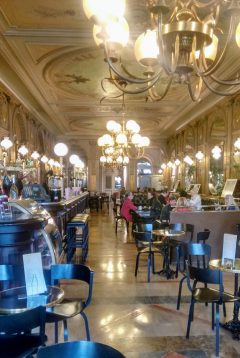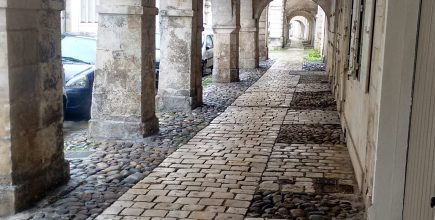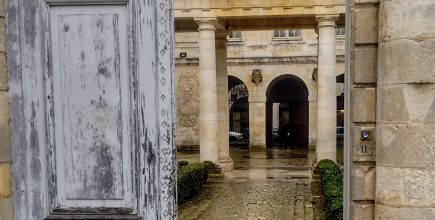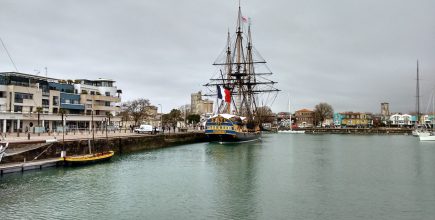01 Arrival
La Rochelle is one of France’s greatest seafaring cities, facing the world on the Atlantic coast. Once ruled by the English crown, the city has always stood apart. It has been religious rebel, fishing capital, gastronomic hub and environmental pioneer. This is a city still striving to be different.
02 Suggested things to see and do
Towers of strength
A tricolour fluttered over the formidable, ancient Saint Nicolas Tower at the old harbour’s entrance. Built in 1345, it shared defensive duties with the slightly smaller Tower of the Chain, alongside. Tour de la Lanterne, the third tower, is the Atlantic coast’s only surviving medieval lighthouse. Its walls still bear graffiti from captured English seamen. The image of these monster structures defines La Rochelle as strongly as the Eiffel Tower proclaims Paris. A joint ticket lets you into all three. The Saint Nicolas Tower has a new and unlikely use, as extreme sports venue. In the summer brave and crazy divers leap off the 120 feet high landmark in cliff diving events.
'Tec tie-up

Cafe de la Paix, La Rochelle
Search in vain in Paris for the wall on which Inspector Maigret would strike a match to light his pipe in the title sequence of the original 1960s BBC TV series. Probably mocked up in the studio. But there are real connections with Georges Simenon, creator of the famous trench-coated inspector (now played by Rowan Atkinson in the ITV series) on the harbour quay. The peripatetic Simenon, who lived at several addresses nearby, would ride into town on horseback in the 1930s and take his refreshment at the Cafe de la Paix. The metal ring to which he tied his steed survives, on the wall outside the immaculately restored cafe, full of Belle Époque wood paneling, mouldings, floral paintings, chandeliers, and mirrors. Another favourite atmospheric bar is the dimly-lit and exciting Cave La Guignette,
Life on the waves
With typically French poetic verve, one of La Rochelle’s unofficial names is “Daughter of the Sea”. They celebrate many centuries of voyaging, fishing and trading over the world’s oceans in the Maritime Museum, which opened in 2015. The story is told in lively displays in a series of shell-shaped pavilions. The visit ends on a real vessel, the France 1, the nation’s weather ship, once anchored out in the Atlantic. An on-board exhibition celebrates Bernard Moitessier, “winner” in the first non-stop singlehanded round-the-world race in 1968-69. He blew the prize by carrying on to Tahiti to “save his soul.” The other magnificent marine feature is the Aquarium. In the restaurant I enjoyed three courses of excellent cooking, instead of the usual bland canteen fare.
Going green

Driver-less electric bus, La Rochelle, 2015
Is La Rochelle France’s greenest city? In 2015 they tested a driver-less electric bus. Guided by sensors, it jinked around the harbour-side, niftily avoiding obstacles, and people. France’s first pedestrianised streets were here, along with the original public bicycle hiring scheme. The eye-catching yellow bikes are available at the Tourist Information Office. You need to register, then the first two hours are free. And do try the little electric ferry, shuttling across the Old Port. There are direct budget flights from the UK to the city’s airport, but I prefer the train, just over seven hours from London. It arrives at the splendidly ornate station, its façade adorned with fish, crabs and shells, the last to built in the grand style, early in the 1900s.
Market choices
This city means serious gastronomical business. Its main market is open every morning, 365 days a year, selling ingredients to make a Masterchef contestant drool. There’s the nutty-tasting butter of Surgeres in the local Charente region, red eggs from Marans, and tourteau de charente, the local cheesecake burned black on the top. The local harbour may not be the piscatorial powerhouse of yore, but a bumper seafood harvest was set on open counters during my visit. I toured mound after mound of all types of oysters, mussels and prawns. And algue, the very edible seaweed I ate, as laverbread, as a boy in Wales. One proud producer insisted I try the illustrious local fortified wine, Pineau des Charentes.
Historic heart
Old La Rochelle grew rich on international trade, and merchants left a handsome legacy in the old town centre. The standout features include 16th and17th century houses, built over open-sided arcades and around restful courtyards. One of the best is in the Cloister of the White Ladies, now government offices. Think Versailles, only smaller, and painted in ochre to give it an Italian look. (If buildings or courtyards look open, just walk on in.) I strolled past half-timbered facades, like the Elizabethan houses of Shakespeare’s Midlands, but with slates nailed over the wood to protect it from the sea air. Some pavements are made from cobbles, ballast brought back from Canada. Stone heads on older buildings represent native people from North America. One street, Rue Nicholas Venelle, is so picturesque it has two stars in the Michelin Guide.
03 A place to stay



